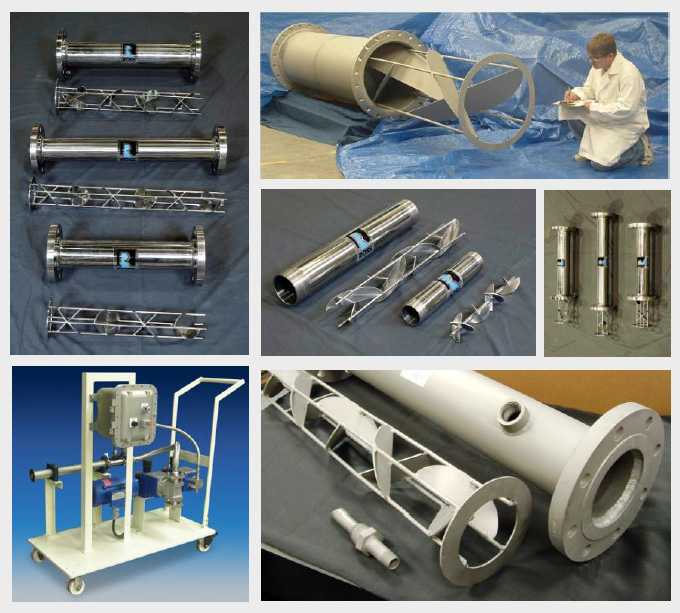Tech Report
Recommended Mixing Equipment for Water and Wastewater Treatment

Application Summary
Static Mixers allow for continuous dosing and blending of treatment chemicals into water and wastewater. Flocculants, disinfectants, neutralizing agents, pH conditioners and other chemicals are conveniently added into a flowing water stream and completely mixed within a relatively short length of pipe.
Used in conjunction with automated instrumentation, Ross Low Pressure Drop Static Mixers deliver predictable quality control based on a virtually maintenance-free operation.
Ross Low Pressure Drop Static Mixers
Ross Low Pressure Drop (LPD) Static Mixers are typical installations in water and wastewater treatment facilities around the world. These mixers consist of a series of baffles or "elements" discriminately positioned in series. Each LPD element is comprised of a pair of semi-elliptical plates set at a 45-degree angle with respect to the central axis and 90 degrees to each other. Additional elements are rotated 90 degrees about the central axis with respect to the previous baffle set.
As the product moves through each element, flow is continuously split into layers and rotated in alternating clockwise and counterclockwise directions. This method of subdividing the flow and generating striations leads to highly efficient and repeatable mixing with minimal pressure loss. During turbulent flow, the mixer elements enhance the random motion of molecules and formation of eddies. This makes the LPD an ideal mixing tool for high flowrate/low viscosity applications. In most water and wastewater processes, four or six LPD elements are usually sufficient to completely disperse treatment chemicals into the main stream.
Ross Low Pressure Drop Static Mixers are used in many other processes including:
- Blending different grades of oil or gasoline
- Dilution of concentrated solutions
- Gas-liquid dispersions
- Pipeline reactions
- Oil/water emulsification
- Biodiesel production
- Mixing of additives into a low-viscosity product
- Chlorine dioxide bleaching of pulp
- Homogenization of process streams for sampling
- Adjusting viscosity
- Chemical suspensions
- Heat transfer
- Blending of flowable solids

Some features of Ross LPD Static Mixers
- Minimal pressure loss. Since static mixers rely on external pumps to move product across the elements, pressure drop often serves as a basis for selecting the appropriate static mixer. In turbulent flow applications, LPD Static Mixers provide excellent mixing without significant loss of pressure.
- Low cost and maintenance. LPD Static Mixers are inexpensive non-motorized devices which are simple to install and do not require any maintenance under normal operating conditions.
- Wide range of sizes and configurations. Mixer elements 1" through 2.5" diameter are welded to a central retaining rod, while larger elements up to 48" diameter are welded to four outside support rods for maximum rigidity and stability. An LPD Static Mixer can be supplied as a removable insert for installation into an existing pipe or as a complete module with housing (choice of flange, threaded or tri-clamp end fittings). The mixer housing may also be customized to include injection ports and removable quills of any preferred size and connection type.
- High quality materials and workmanship. Rugged design LPD Static Mixers are fabricated in stainless steel type 316 or 304 and in carbon steel. When dosing substances that are not compatible with steel, product wetted parts may be coated with fluoropolymer resin (Teflon®), polyvinylidene fluoride (Kynar®) or other compatible material that can protect against corrosion or chemical attack.